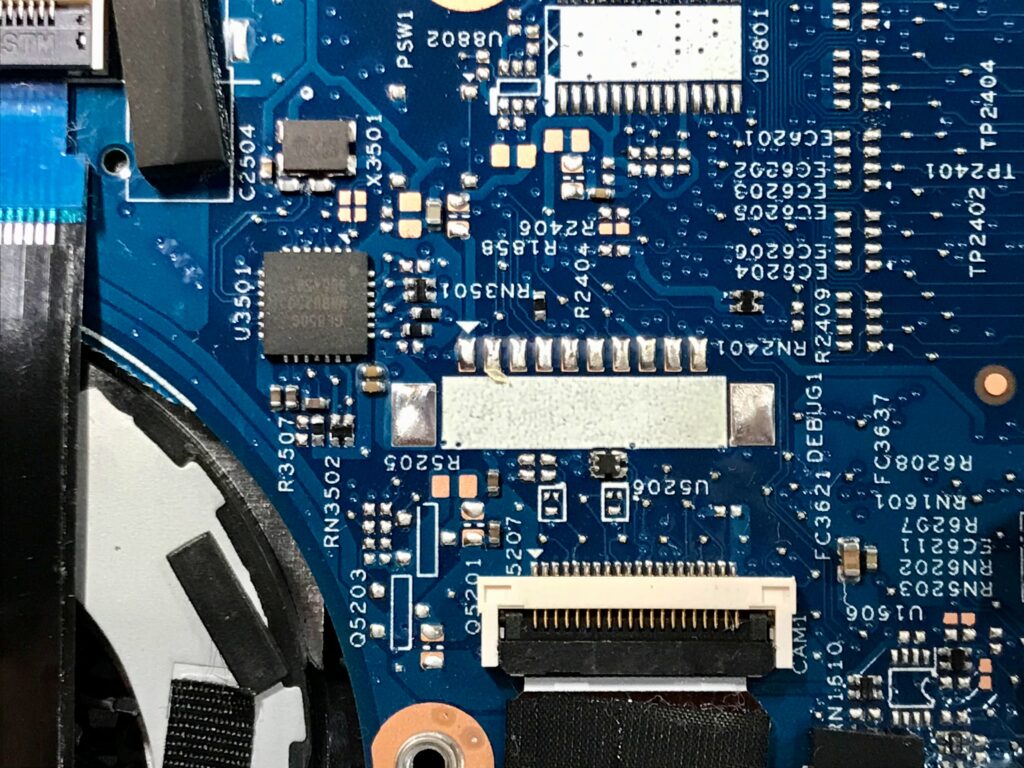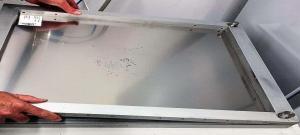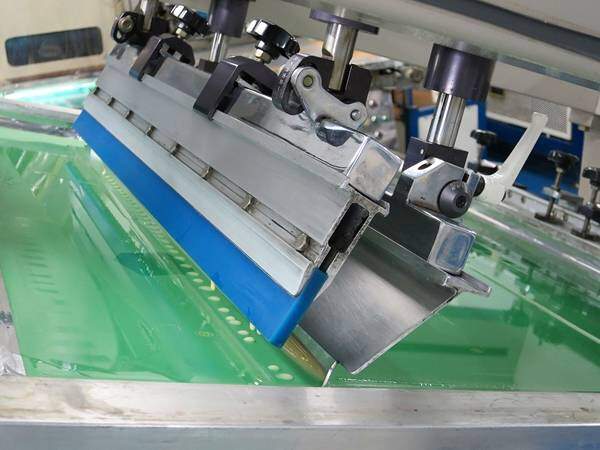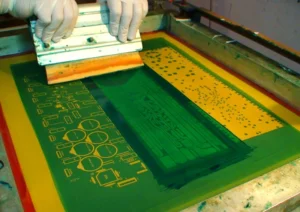In the ever-advancing world of modern technology, electronic products play an increasingly vital role in our lives. As the core of electronic devices, Printed Circuit Boards (PCBs) carry the transmission of electrical signals and serve as the connection between components. However, while we enjoy the convenience of these efficient electronic products, few people think about the complex manufacturing process behind PCBs, where the importance of character printing stands out remarkably. While we appreciate high-tech electronic products, few pay attention to the mysteries behind character printing. So, what exactly is the character printing process? What role does it play in PCB production? How do we ensure the accuracy and quality of character printing? Let's uncover the secrets of this crucial character printing process together and explore its intricacies and challenges.


Before the character printing process begins, adequate preparations must be made. This includes a thorough inspection of the printing equipment and materials to ensure they are in good condition and meet production requirements. Additionally, the PCB (Printed Circuit Board) should be thoroughly cleaned to ensure the accuracy and quality of the printing. In the character printing process, the first step is to prepare the circuit patterns and markings to be printed. These patterns are usually in the form of electronic files and require graphic processing and adjustments using professional software to ensure their size and position perfectly match the PCB board surface. Before conducting character printing, precise configuration of the printing equipment is required. This involves adjusting parameters such as printing speed, pressure, and temperature of the screen printing machine to ensure the stability and accuracy of the printing process. Once the preparation work and equipment setup are completed, the character printing process officially begins. In this step, a silk screen printing machine is used to print pre-processed circuit patterns and labels onto the PCB surface. It is essential to maintain a stable pressure and speed during printing to ensure the clarity and precision of the patterns. After character printing is completed, it is necessary to inspect and verify the printing quality. Through visual inspection and measurement tools, we can ensure the accuracy and consistency of each character and pattern, as well as the overall quality of the PCB board surface. After printing is completed, the ink or pigment needs to undergo treatment and curing. This can be achieved through methods such as heat treatment or ultraviolet irradiation to ensure that the printed patterns on the PCB surface are stable and durable. Finally, the PCB (Printed Circuit Board) after character printing needs to undergo final inspection and packaging. During the packaging process, it is important to take precautions to prevent damage to the character printing and to ensure the integrity and safety of the product. Although the steps and processes of character printing may appear simple, every detail involved is crucial. With meticulous preparation, strict quality control, and advanced technological methods, we can ensure the accuracy and reliability of character printing in PCB production. Next, let's continue exploring the equipment and materials used in the character printing process, as well as how to implement effective quality control to ensure the goal of creating flawless PCBs is achieved.

Character printing is the process of applying ink or pigment to the desired locations on the surface of a PCB (Printed Circuit Board) using a screen printing machine. One of the most common devices used for character printing is the screen printing machine, which consists of a metal mesh (usually made of stainless steel wires) on which ink or pigment can be coated. The working principle of the screen printing machine involves pushing the ink or pigment through the holes of the mesh and then applying pressure on the PCB's surface to transfer the ink or pigment to the desired locations, creating the desired pattern. In the screen printing machine, there are several key parameters that need to be adjusted to ensure printing quality and precision. For example, the mesh size and shape determine the fineness of the printed pattern, and the speed and pressure of the printing machine also affect the transfer of ink or pigment. Therefore, the operators need to adjust these parameters based on the specific PCB design and requirements to achieve the best printing results. The materials used in character printing are critical factors that ensure printing quality. Common printing materials for character printing include ink and pigment. Ink is typically in semi-solid or liquid form and is used to create the desired characters and patterns on the PCB surface. Ink can be chosen according to specific requirements, for instance, organic solvent-based or water-based ink can be selected based on the needs of the application to determine the choice of printing material. Pigment is a color-stable powdered material, commonly used for printing-colored patterns and markings. During the character printing process, pigments are mixed with an appropriate diluent to form a printing ink, which is then applied using a screen printing machine. The selection of pigments takes into account factors such as color stability, particle size, and gloss to ensure clarity and durability of the printed patterns. In addition to ink and pigment, there are some special character printing materials, such as conductive ink and solder resist ink, used for specific PCB design requirements. Conductive ink can be used to print conductive patterns, such as solder pads and wire connections on circuit boards, while solder resist ink can be used to protect non-soldered areas from solder contamination and short circuits. In the character printing process, selecting the appropriate printing equipment and materials is a crucial step in ensuring print quality. Operators need to precisely adjust the parameters of the printing equipment and choose suitable inks, pigments, or other special materials based on the specific PCB design and requirements to achieve a high-quality character printing effect.

The character printing process plays a crucial role in PCB production; however, it also faces several challenges. With the continuous development of modern electronic products, the complexity and high-density component layout of PCBs are gradually increasing, posing challenges to the character printing process. More complex circuit board designs may result in smaller and more intricate printing patterns, affecting printing accuracy and consistency. At the same time, in terms of material selection, manufacturers need to strike a balance between high quality and environmental requirements. Traditional inks may contain harmful substances, while eco-friendly inks may not perform as desired during the printing process. To adapt to the automation and intelligence trends in the electronics manufacturing industry, the character printing process requires the implementation of advanced automation and intelligent technologies to enhance work efficiency and quality consistency. To address the challenges faced in the character printing process, we can implement a series of improvement methods. For the challenges posed by complexity and high-density component layouts, we can invest in high-precision screen printing machines and advanced graphic processing software to enhance printing accuracy and precision. Additionally, adjusting printing parameters and optimizing printing patterns can meet the demands of complex circuit boards. Regarding material selection, we need to choose high-quality inks and pigments that comply with environmental standards to ensure both print quality and eco-friendliness. It is also essential to keep a close eye on the development of new environmentally friendly materials and introduce advanced alternatives. Furthermore, introducing automated character printing equipment and robot-assisted operations can reduce human errors and variations, thereby improving production efficiency and quality consistency. Simultaneously, real-time monitoring and quality inspection using machine vision technology can promptly detect issues and make automatic adjustments. Effective quality control and technical training are crucial for the success of the character printing process. Establishing a robust quality control system, including real-time monitoring and recording of printing parameters and quality indicators, ensures the accuracy and stability of the printing process. Additionally, providing comprehensive technical training enables operators to master the correct printing techniques and operational essentials, thereby avoiding operational errors and quality issues. Regular quality reviews and technical assessments can identify problems and facilitate continuous process improvement, ensuring the sustained optimization and enhancement of the character printing process. Through this series of improvement methods and measures, we can effectively address the challenges of the character printing process, improve printing quality and production efficiency, and drive the continuous development and progress of the electronics industry. Through an in-depth exploration of the character printing process, we have come to a profound understanding of its importance and influence in PCB production. The accuracy and quality of character printing directly impact the performance and reliability of PCBs, making this a critical step that cannot be overlooked. In the ever-changing electronics industry, continuous improvement and development of the character printing process are essential to ensuring flawless PCBs. Only through sound quality control and technological innovation can we forge more efficient and reliable electronic products in the future. In PCB production, the process of character printing is undoubtedly a crucial link, as it transforms electronic designs into tangible products. Therefore, for any electronics manufacturer and technical professional, a thorough understanding of the character printing process not only enhances production efficiency but also strengthens product competitiveness. Let's join hands and continue to focus on and improve the character printing process together, creating a better, flawless electronic world. Whether you are a learner or a professional, it is our hope that this article provides you with valuable knowledge and insights.

Customer support